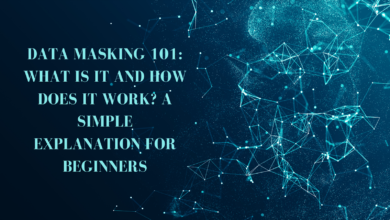Staying Secure and Compliant: Navigating the Complexities of Cybersecurity Disclosures

In an era where digital infrastructure forms the backbone of countless organizations, safeguarding sensitive data cannot be emphasized enough. Businesses, institutions, and individuals face an ever-evolving battleground against cyber threats. As cybercriminals grow more adept, a dynamic approach to cybersecurity becomes paramount, particularly through adequate disclosures. A robust approach such as Fortinet’s PSIRT protects against vulnerabilities and ensures that organizations remain vigilant and prepared. With the pervasive nature of digital threats, organizations must prioritize preventive and responsive strategies to protect their infrastructures from potential harm. The essence of staying vigilant lies in proactively designing comprehensive policies that do not merely address known threats but are adaptable enough to counter unknown and emerging vulnerabilities. This strategy also encompasses maintaining a transparent dialogue with stakeholders, thus nurturing trust and fortifying the organization’s reputation. As the digital frontier expands, so must the strategies employed to guard against the myriad threats inherent in this landscape.
The Significance of Cybersecurity Disclosures
Cybersecurity disclosures are a lighthouse in the often turbulent sea of digital threats. Timely and transparent disclosure practices serve multiple pivotal functions. Primarily, they exhibit an organization’s unwavering commitment to the security and integrity of their data and operations. By disclosing potential vulnerabilities promptly, organizations protect themselves and enhance trust with clients, partners, and regulatory bodies. This trust, once established, sets the foundation for enduring relationships and underscores the integrity of the organization. Furthermore, stringent disclosure practices compel organizations to continually assess their policies, driving improvements that enhance their security infrastructure.
Key Components of a Disclosure Policy
A well-rounded disclosure policy is not merely a document but a living framework subject to constant reassessment and evolution. Establishing such a policy requires a deep understanding of the varied threats an organization faces. This entails creating clear protocols that categorize vulnerabilities based on their potential impact and the response needed. For instance, distinguishing between critical vulnerabilities that necessitate immediate attention and lower-risk threats that can be resolved through routine updates. Additionally, communication guidelines within the policy must be explicit, ensuring that if a breach or vulnerability arises, all affected parties are informed promptly, thereby mitigating potential damages and preserving trust.
Building a Culture of Cybersecurity Awareness
At the heart of any formidable cybersecurity strategy is the cultural ethos of the organization itself. Cultivating a cybersecurity-aware culture doesn’t just reduce the risk of internal breaches; it amplifies the organization’s overall defense mechanism. Comprehensive training initiatives should be educational and engaging, creating an environment where employees feel empowered and obligated to maintain stringent cybersecurity practices. Further, implementing regular workshops and cyber drills can simulate real-world scenarios, preparing employees to respond efficiently to genuine crises. Encouraging cybersecurity champions at different organizational levels can foster an ecosystem where security is a shared responsibility, not just the purview of IT departments.
Steps to Enhance Disclosure Procedures
- Assess Risk: An in-depth, ongoing risk assessment is a foundational step in solidifying disclosure procedures. This analysis should include threat modeling, identifying potential attack vectors, and assessing weak points. Continuous audits, penetration tests, and vulnerability assessments ensure that organizations remain aware of their security posture and adjust their strategies accordingly.
- Develop Communication Channels: Establishing robust communication channels facilitates timely notifications during incidents and helps nurture transparency. Internal channels must ensure that teams across departments are aligned, and external channels must comply with legal and regulatory standards, ensuring all stakeholders are informed appropriately.
- Implement Advanced Technologies: Adopting cutting-edge technologies is essential for improving the speed and effectiveness of detection and response. Advanced solutions, including automated monitoring systems, provide real-time alerts that enable swift action. These technologies also allow data aggregation to understand patterns better and anticipate future threats, effectively minimizing potential risks.
Challenges in Cybersecurity Disclosures
Navigating the realm of cybersecurity disclosures is fraught with challenges, each requiring careful maneuvering. Organizations often encounter the complexity of varying global regulations that complicate compliance efforts. Additionally, resource constraints, both in terms of financial and human capital, can impede effective policy implementation. Addressing these challenges mandates a balanced approach. Investments in workforce training and the procurement of scalable technological solutions are essential. Partnering with industry experts and engaging in knowledge-sharing initiatives can also be instrumental in overcoming these hurdles, enabling the development of a more resilient cybersecurity framework.
Role of Technology in Improving Disclosures
In today’s digitally advanced world, technology serves as both a tool and a safeguard against potential threats. Leveraging TechRepublic’s insights into digital transformations highlights the role of AI and Machine Learning as pivotal in identifying and predicting breaches with precision. These technologies provide invaluable support by analyzing extensive datasets to recognize patterns, thus enhancing an organization’s predictive capabilities. In tandem with modern cybersecurity tools, organizations are empowered to respond proactively rather than reactively. As these tools continue to evolve, their integration into disclosure processes will expedite responses and refine the accuracy and efficiency of various cybersecurity measures.
Looking Ahead: Future Trends in Cybersecurity Disclosures
As the digital landscape evolves, so too do the strategies for safeguarding it. Future trends in cybersecurity disclosures emphasize greater international collaboration and uniformity of standards. Organizations should prepare to engage with global partners to develop cohesive strategies that transcend borders. By adopting a forward-looking approach incorporating best practices from across the globe, organizations can enhance their security measures and contribute to a more secure digital ecosystem overall. Such endeavors are crucial as the interconnectedness of digital networks continues to expand, requiring a unified front to tackle emerging threats effectively.
Conclusion
In conclusion, cybersecurity is in constant flux, and navigating it requires vigilance, adaptability, and a comprehensive approach to disclosures. Organizations can safeguard their data, reputation, and relationships by fostering a culture of awareness, leveraging cutting-edge technologies, and maintaining strategic transparency. The key is to understand that cybersecurity is not a destination but an ongoing journey, where staying informed and responsive is crucial to success. As challenges continue to arise and change, the need for innovative, proactive, and collaborative strategies will become more pronounced, securing not just the present but also paving the way for a future built on trust and resilience.



